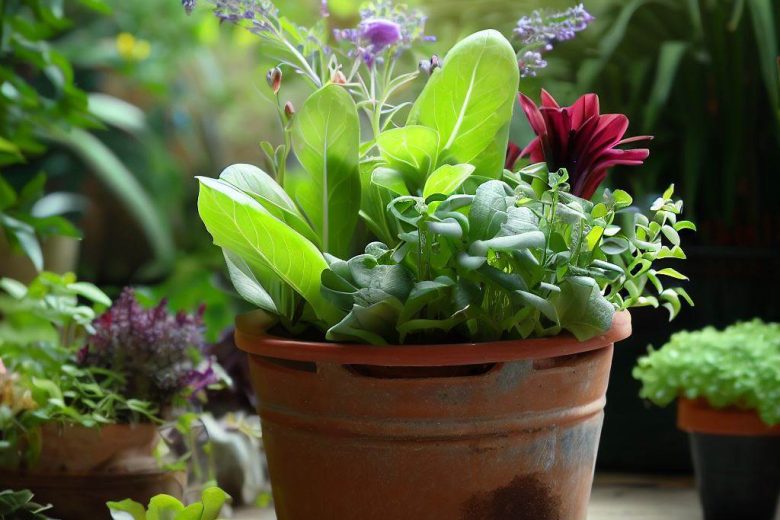Are you eager to embark on your gardening journey and wondering how long it takes for arugula to grow? Arugula, a vibrant and peppery leafy green, is a fantastic addition to any garden. Whether you’re a seasoned gardener or a newbie with a green thumb, this guide will provide you with all the information you need to know about arugula growth. Let’s dive in and explore the fascinating world of arugula cultivation!
Arugula typically takes around 21 to 40 days to grow from the time of planting to the first harvest. This timeframe can vary based on factors such as temperature, sunlight, soil quality, and specific arugula variety. Keep in mind that arugula is a quick-growing leafy green, making it an excellent choice for gardeners looking for a relatively fast harvest.
How Long Does It Take Arugula To Grow?

Arugula, also known as rocket or roquette, is a leafy green vegetable with a distinct peppery flavor. It’s a popular choice for salads, sandwiches, and garnishes due to its unique taste and nutritional value. Arugula is a cool-season crop, meaning it thrives in cooler temperatures and can tolerate light frosts.
Read Also: Top 50 Fast Growing Fruits In Pots
Selecting the Right Arugula Variety
Before you start planting, choose the arugula variety that suits your preferences. There are different types, including wild arugula and cultivated varieties. Consider factors like taste, leaf shape, and growth rate when making your selection.
Preparing the Soil for Planting
Arugula thrives in well-draining soil rich in organic matter. Prepare your garden bed by loosening the soil and incorporating compost. This will provide a healthy environment for the arugula seeds to germinate and grow.
Read Also: [Beginners Guide] How To Grow Butternut Squash Vertically
Planting Arugula Seeds
Plant arugula seeds directly into the prepared soil. Sow the seeds about half an inch deep and one inch apart. You can plant them in rows or scatter them across the bed. After planting, gently water the soil to ensure proper seed-to-soil contact.
Caring for Arugula Seedlings
Arugula seeds usually germinate within 7 to 14 days, depending on environmental conditions. Once the seedlings emerge, make sure they receive adequate sunlight. Arugula prefers around 4 to 6 hours of sunlight per day.
Read Also: [Beginners Guide] How To Grow Lettuce In Vertical Garden
Thinning the Arugula Seedlings
When the arugula seedlings have a couple of true leaves, it’s time to thin them out. Space the seedlings at least 4 to 6 inches apart to give them room to grow. Thinning prevents overcrowding and allows the plants to develop strong roots.
Fertilization and Watering
Fertilize the arugula plants with a balanced, water-soluble fertilizer to encourage healthy growth. Keep the soil consistently moist but not waterlogged. Mulching around the plants helps retain moisture and suppresses weeds.
Read Also: 25 Easiest Vegetables to Grow from Seed
Managing Pests and Diseases
Keep an eye out for common pests like aphids and caterpillars, as well as diseases like downy mildew. Regularly inspect your arugula plants and take prompt action if you notice any issues. Using organic pest control methods can help protect your plants without harmful chemicals.
Harvesting Arugula Leaves
The exciting moment arrives when you can start harvesting your arugula leaves. Young leaves can be harvested about 3 to 4 weeks after planting. Simply snip off the outer leaves, leaving the center of the plant intact for continued growth. Regular harvesting promotes new leaf growth and a longer harvest period.
Read Also: 25 Easiest Vegetables to Grow in Pots
Factors Affecting Arugula Growth Time
Several factors influence the time it takes for arugula to grow. Temperature, sunlight, soil quality, and moisture levels play crucial roles in the growth rate. Cooler temperatures generally result in slower growth, while warmer conditions can speed up the process.
How often should I water my arugula plants?
Water your arugula plants whenever the top inch of soil feels dry. Be sure not to overwater, as arugula prefers slightly moist but well-draining soil.
Read Also: Avocado Seed Growing Stages [A Comprehensive Guide]
Can I grow arugula indoors?
Absolutely! Arugula can be grown indoors in containers with adequate sunlight. Just ensure the containers have proper drainage to prevent waterlogging.
Why are my arugula leaves turning yellow?
Yellowing leaves can indicate nutrient deficiencies or overwatering. Check your watering practices and consider providing a balanced fertilizer.
What is the best time of day to harvest arugula?
The best time to harvest arugula is in the morning when the leaves are hydrated but haven’t been exposed to strong sunlight yet.
Read Also: 50 Best Beginner Plants For Gardening [Easy To Grow]
Can I let my arugula flower?
While arugula does produce small white flowers, allowing it to flower can make the leaves bitter. To enjoy the best flavor, it’s recommended to harvest before flowering.
Selecting the Right Arugula Variety
Before you begin planting, consider the different arugula varieties available. You can choose from wild arugula, which has a stronger flavor, or cultivated varieties that offer a milder taste. Some varieties are better suited for specific growing conditions, so choose one that aligns with your climate and preferences.
Preparing the Soil for Planting
Arugula thrives in well-draining soil with a pH level between 6.0 and 6.8. Prepare your garden bed by loosening the soil to a depth of about 6 inches. Incorporate organic compost or well-rotted manure to improve soil fertility and structure. Proper soil preparation sets the foundation for healthy arugula growth.
Planting Arugula Seeds
Sow arugula seeds directly into the prepared soil. Plant the seeds about ½ inch deep and space them around 1 inch apart. You can create rows or scatter the seeds across the bed. After planting, lightly water the soil to ensure good seed-to-soil contact.
Providing Optimal Growing Conditions
Arugula thrives in cooler temperatures, ideally ranging from 50°F to 65°F (10°C to 18°C). It’s a cool-season crop that can tolerate light frosts. Place your arugula bed in a location that receives partial sunlight, especially during the warmer months. Adequate sunlight is crucial for healthy leaf development.
Caring for Arugula Seedlings
Once the arugula seedlings emerge, thin them out to provide enough space for growth. Leave about 4 to 6 inches of space between each seedling. Regularly water the plants to keep the soil consistently moist but not waterlogged. Mulching around the plants can help retain soil moisture and prevent weed growth.
How to Harvest Arugula So It Keeps Growing
Harvesting arugula correctly ensures that your plant continues to produce fresh leaves for an extended period. Here’s how to harvest arugula to promote ongoing growth:
Harvesting Young Leaves
Young arugula leaves are the most tender and flavorful. Begin harvesting when the leaves are around 2 to 3 inches in length. Use clean, sharp scissors or garden shears to snip off the outer leaves, leaving the center of the plant intact. This encourages the plant to keep producing new leaves from the center.
Regular Harvesting
Frequent harvesting is key to prolonging the arugula’s harvest period. You can typically harvest arugula every 1 to 2 weeks, depending on the rate of growth. As long as the plant continues to produce new leaves, you can enjoy a steady supply of fresh arugula for your culinary creations.
Avoiding Flowering
Allowing arugula to flower can signal the end of its leaf production phase. When the plant starts to send up flower stalks, its energy is diverted from leaf growth to flowering and seed production. To prevent this, consistently harvest the leaves and pinch off any flower buds that appear.
Post-Harvest Care
After each harvest, give your arugula plants a light feeding of balanced liquid fertilizer to support their growth. Water the plants if the soil feels dry to the touch. Keeping the arugula well-fed and adequately watered encourages continuous leaf production.
By following these guidelines for growing and harvesting arugula, you’ll be well on your way to cultivating a bountiful supply of fresh, peppery greens that can enhance your meals throughout the growing season. Enjoy the rewards of your efforts as you savor the vibrant flavors of homegrown arugula in your dishes.
Conclusion
Growing arugula is a rewarding experience that offers fresh and flavorful greens for your culinary delights. By following the steps outlined in this guide, you’ll be well on your way to cultivating healthy arugula plants in your own garden. Remember to consider factors like variety, soil preparation, care, and harvesting techniques for a successful arugula-growing journey.





2 Replies to “[Beginners Guide] How Long Does It Takes Arugula To Grow?”